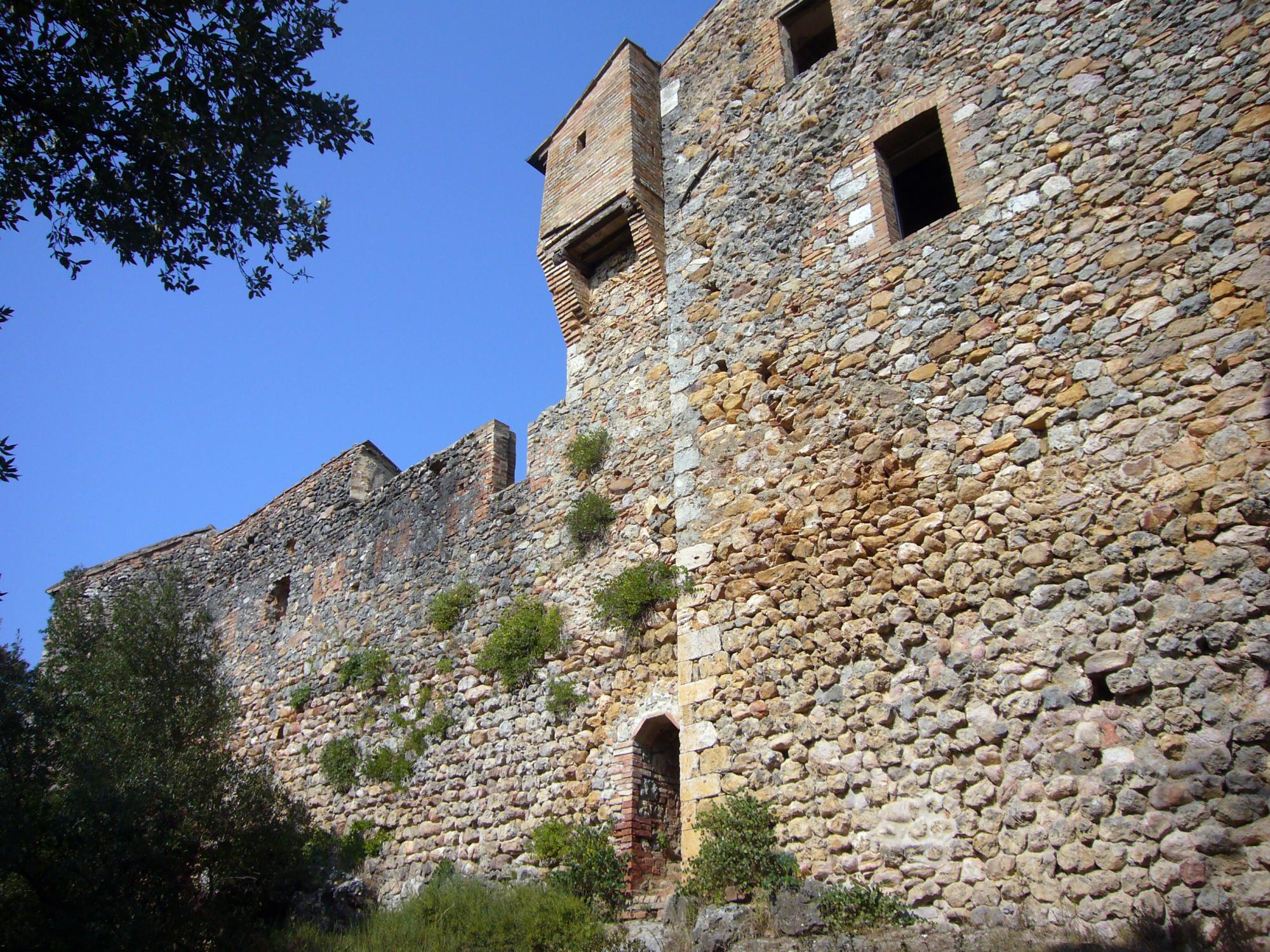
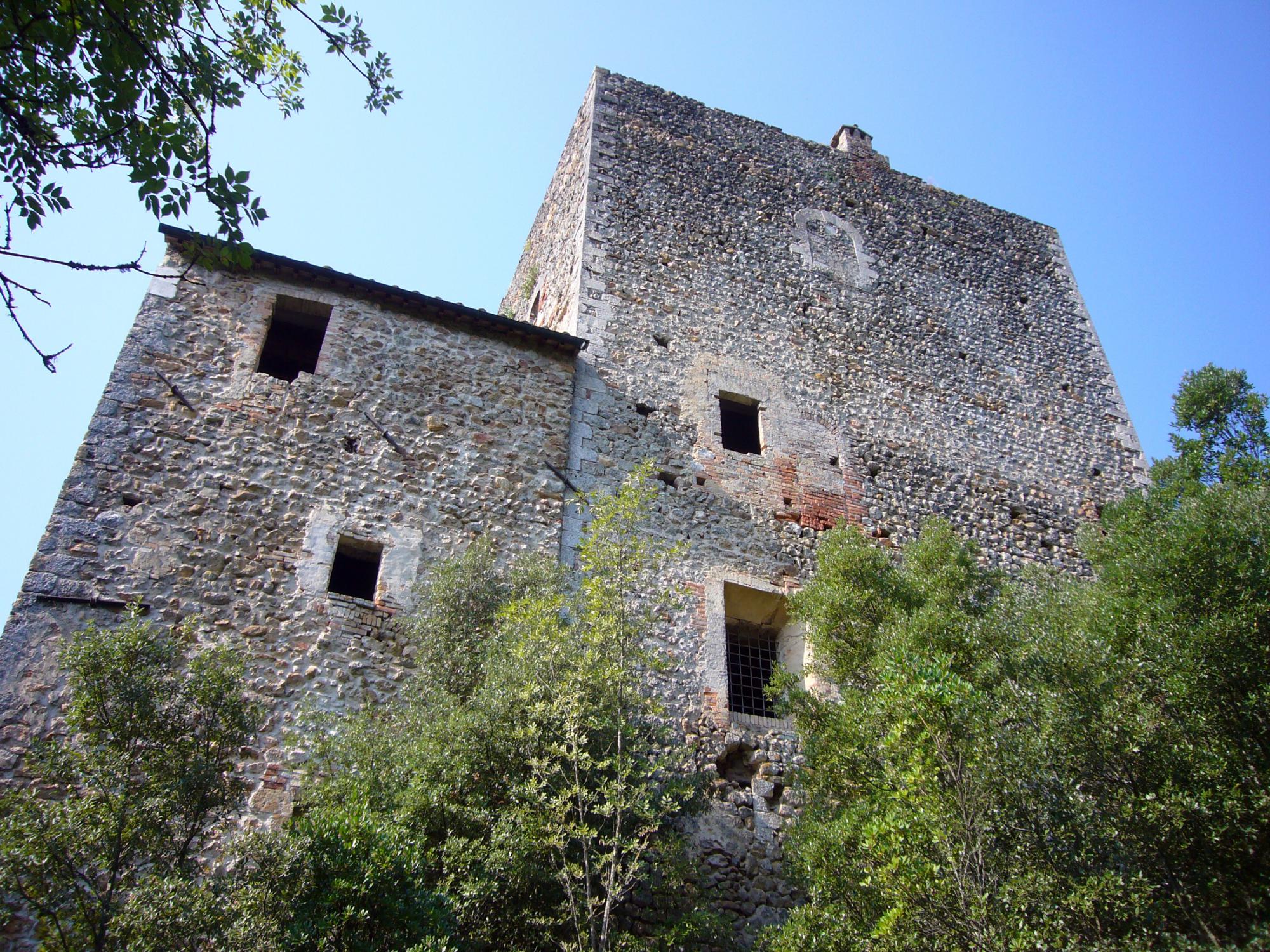
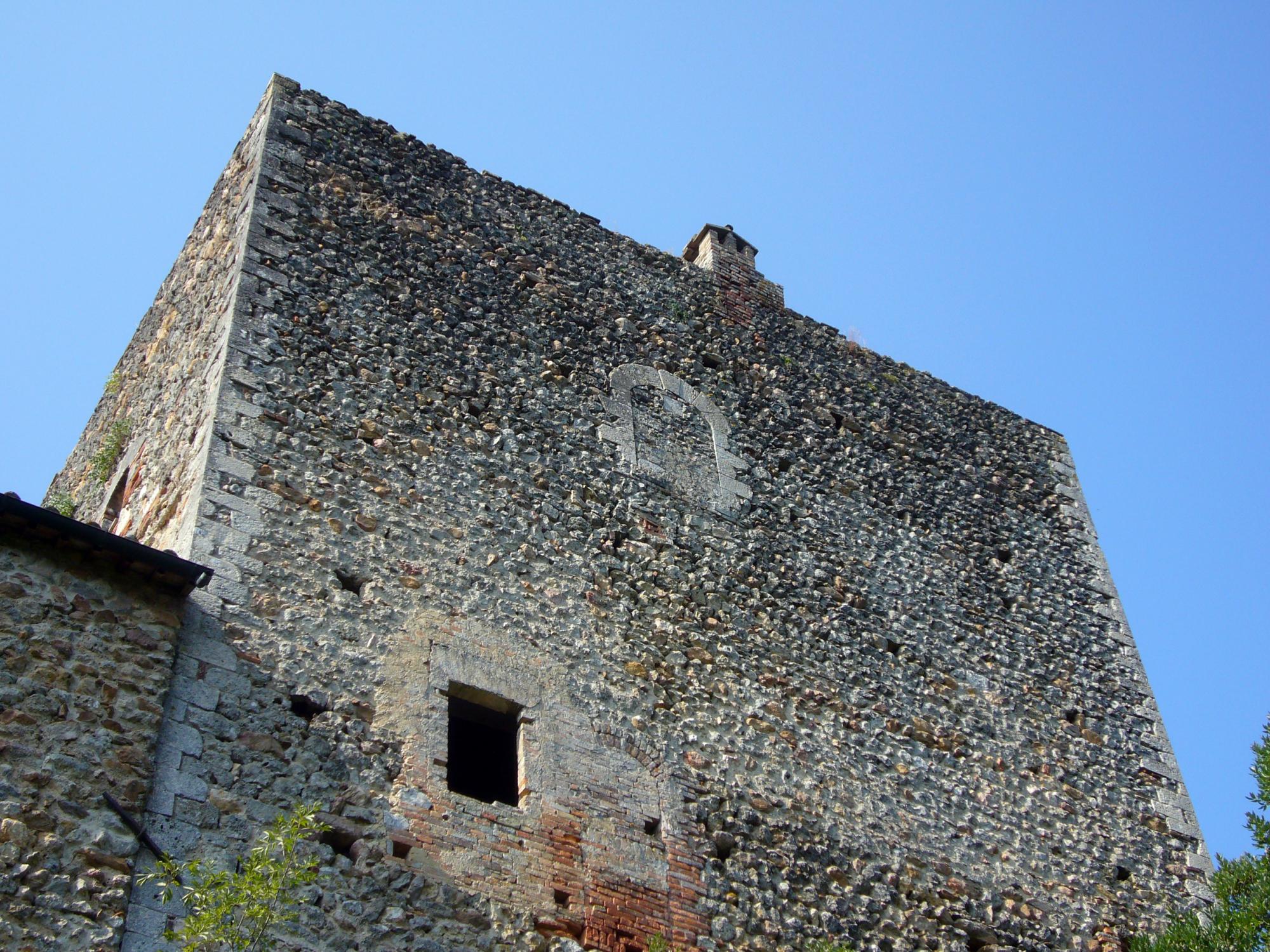
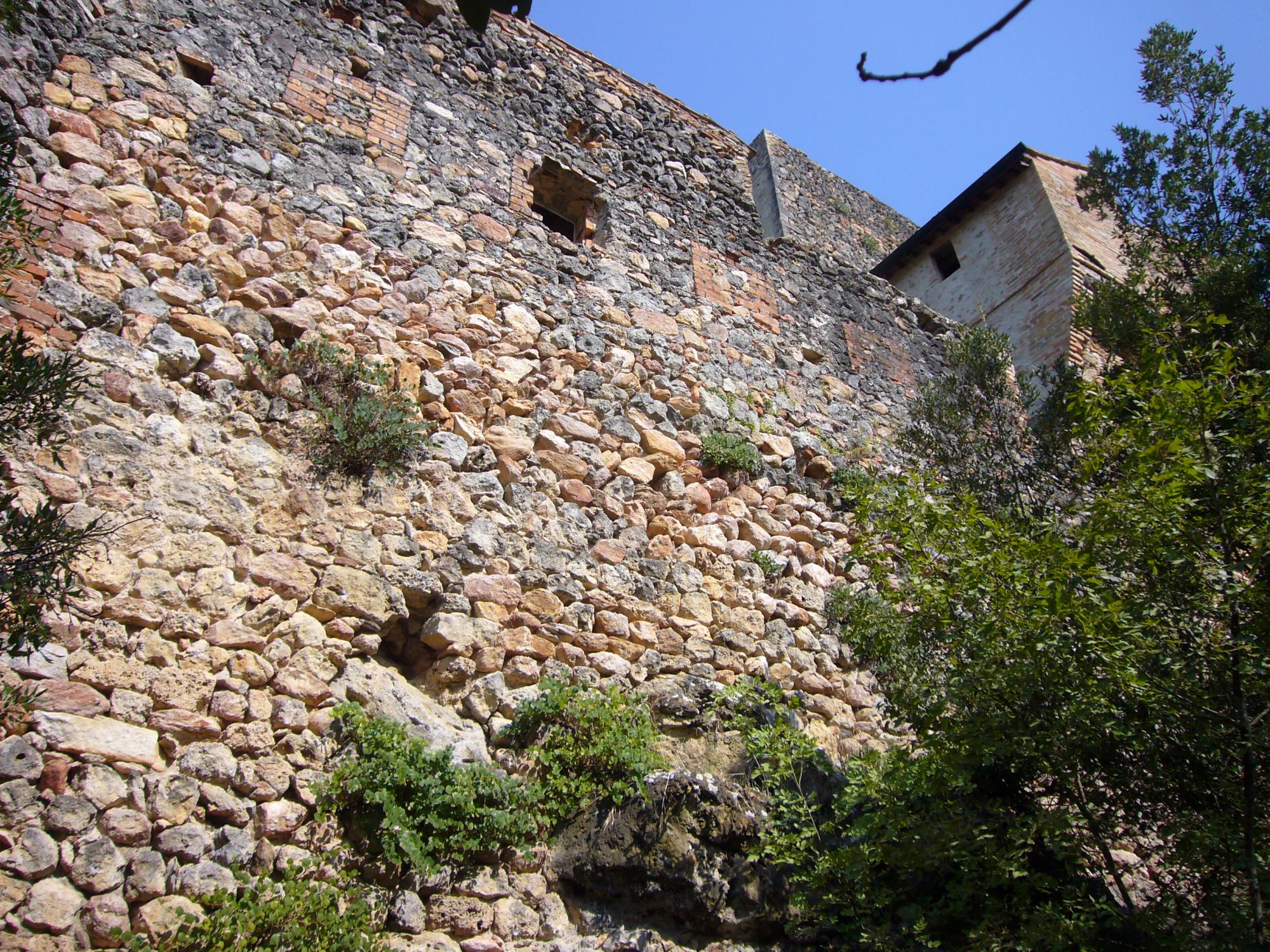
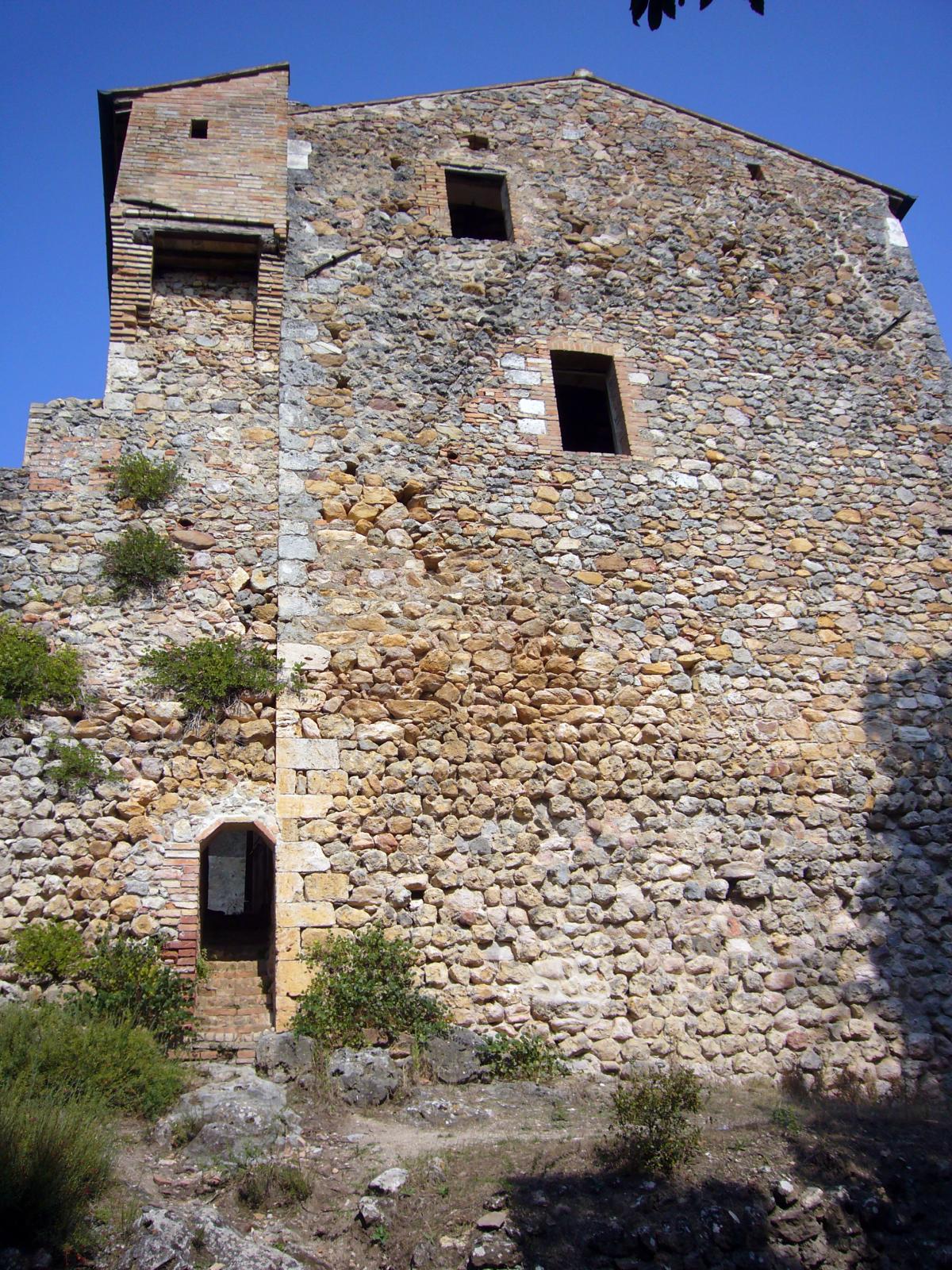
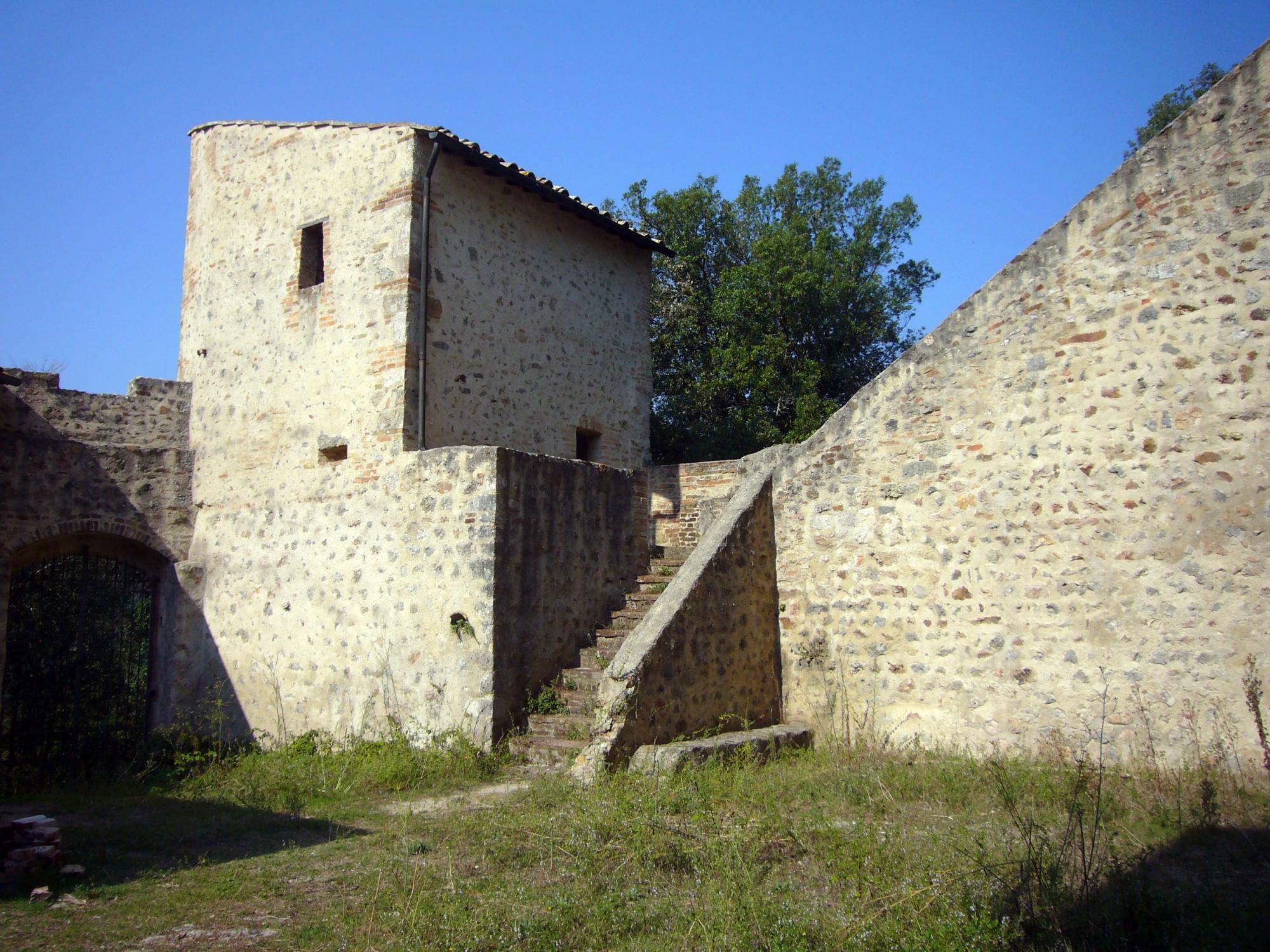

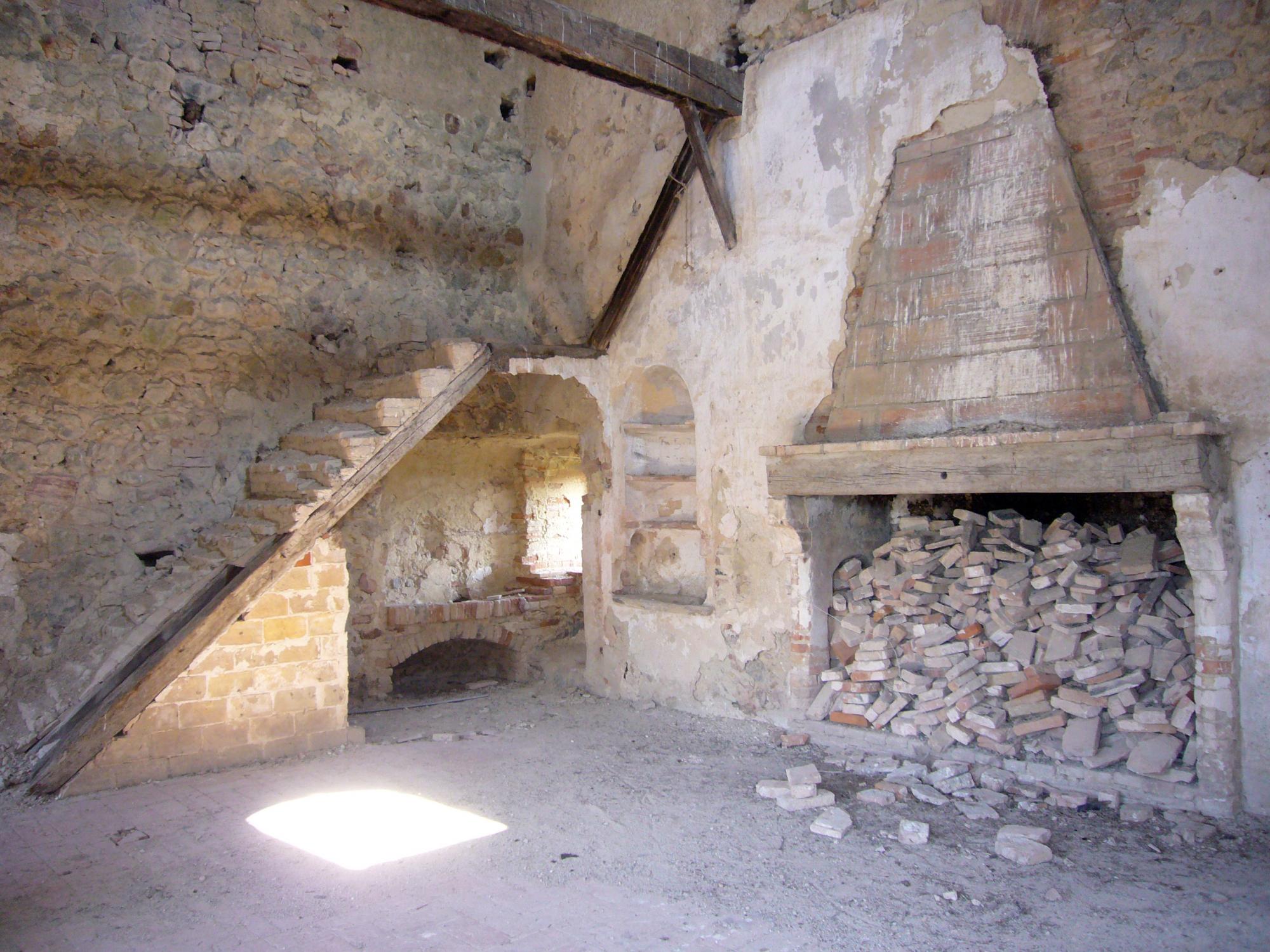
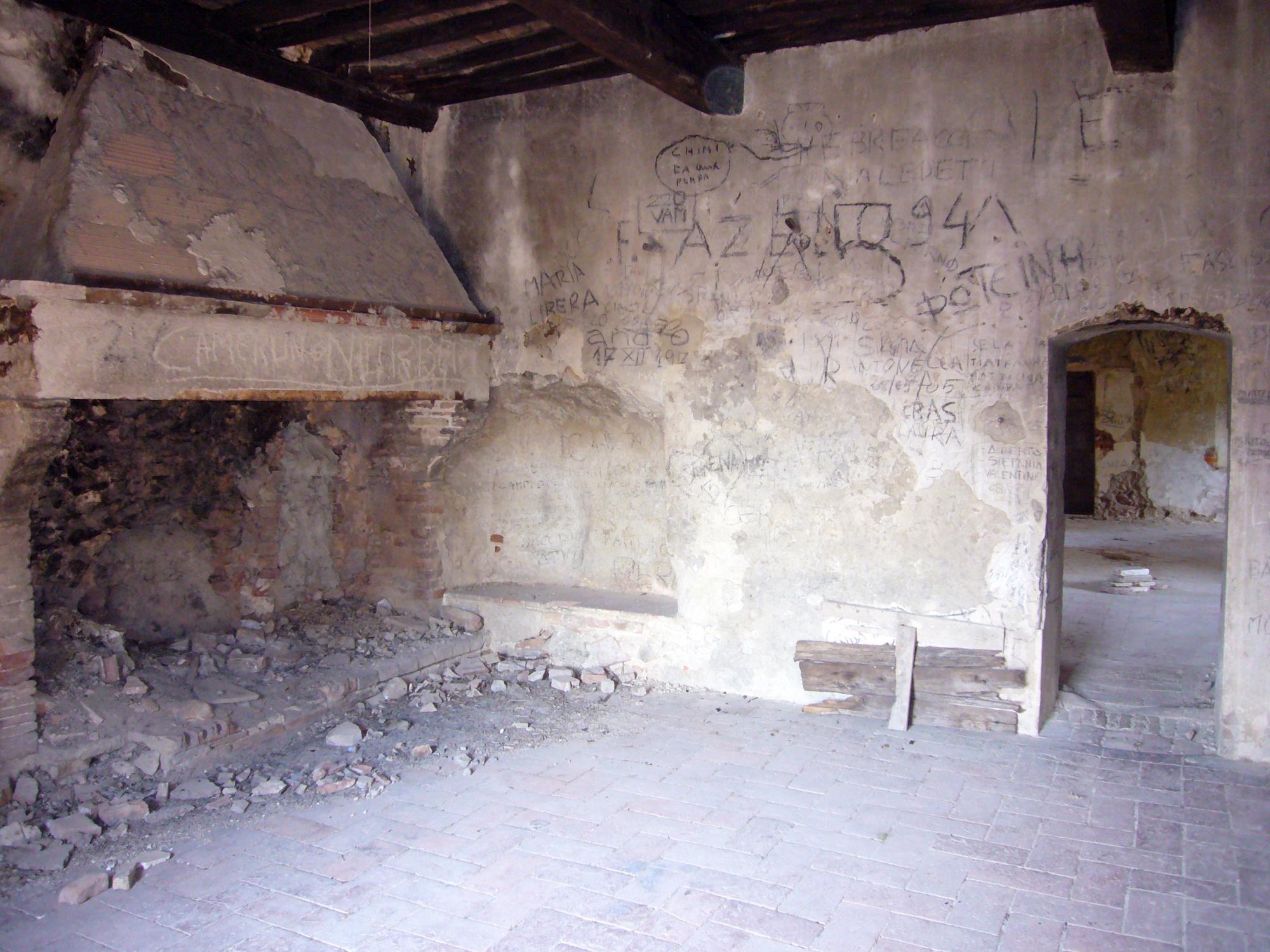
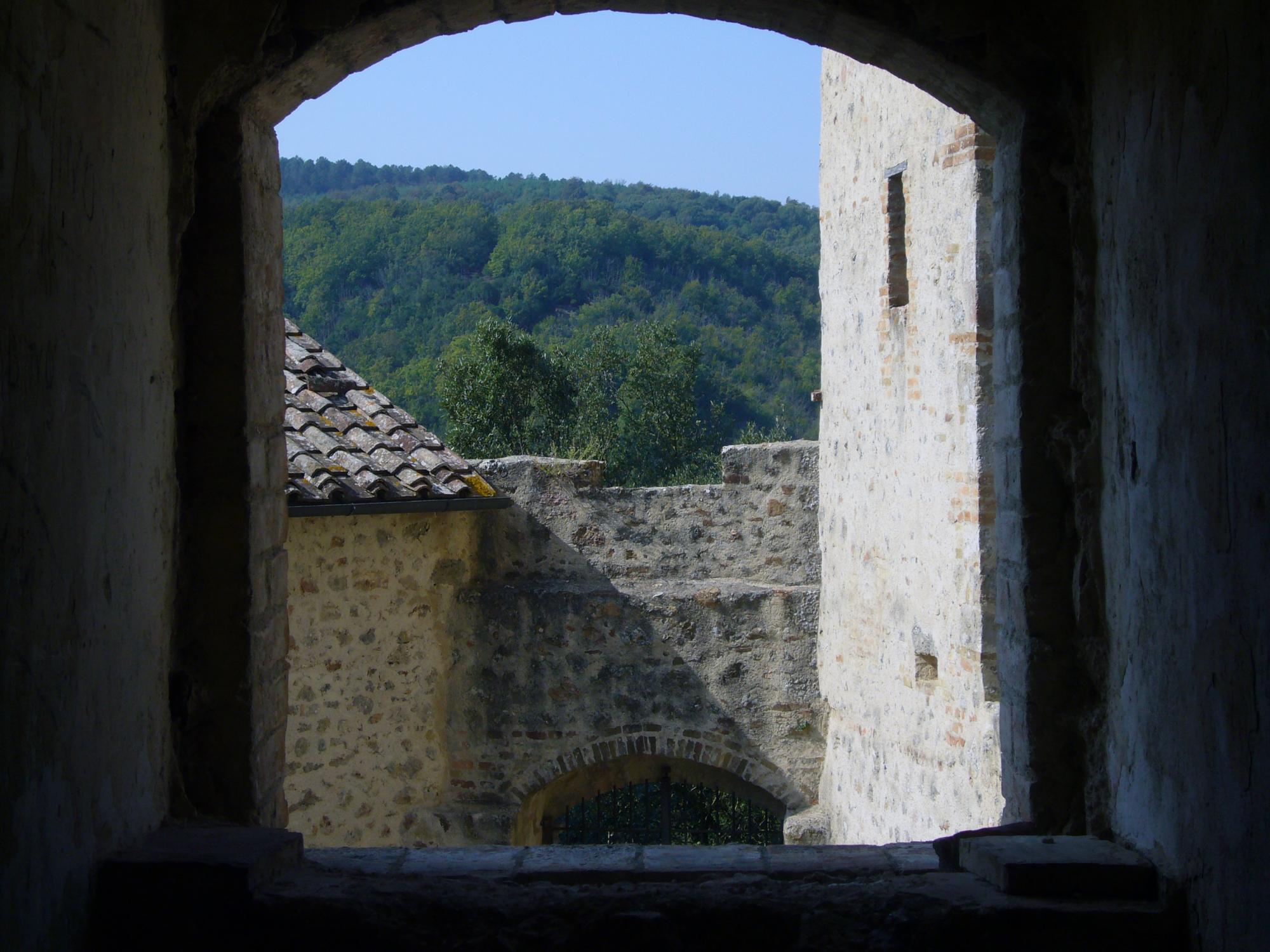
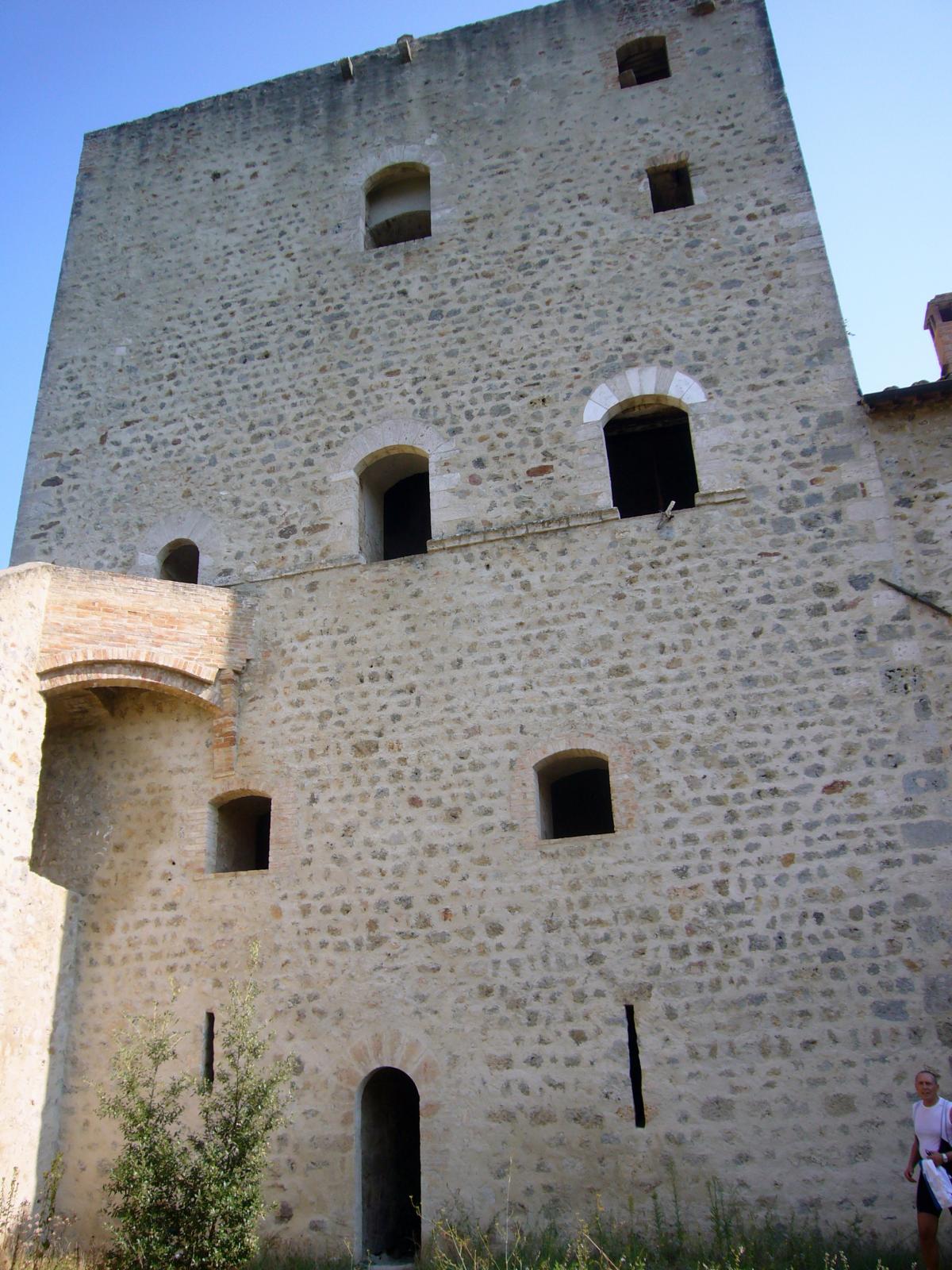
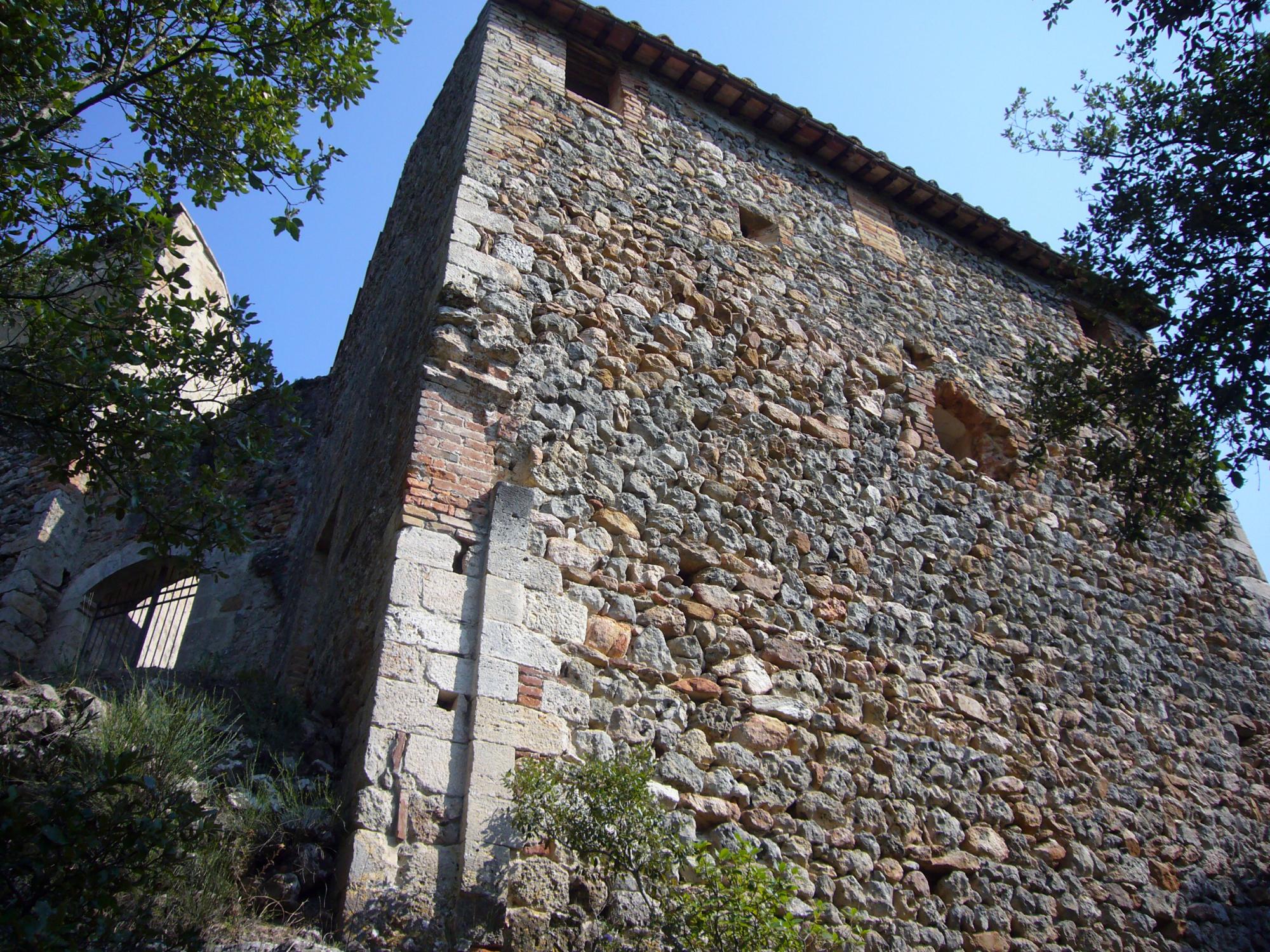
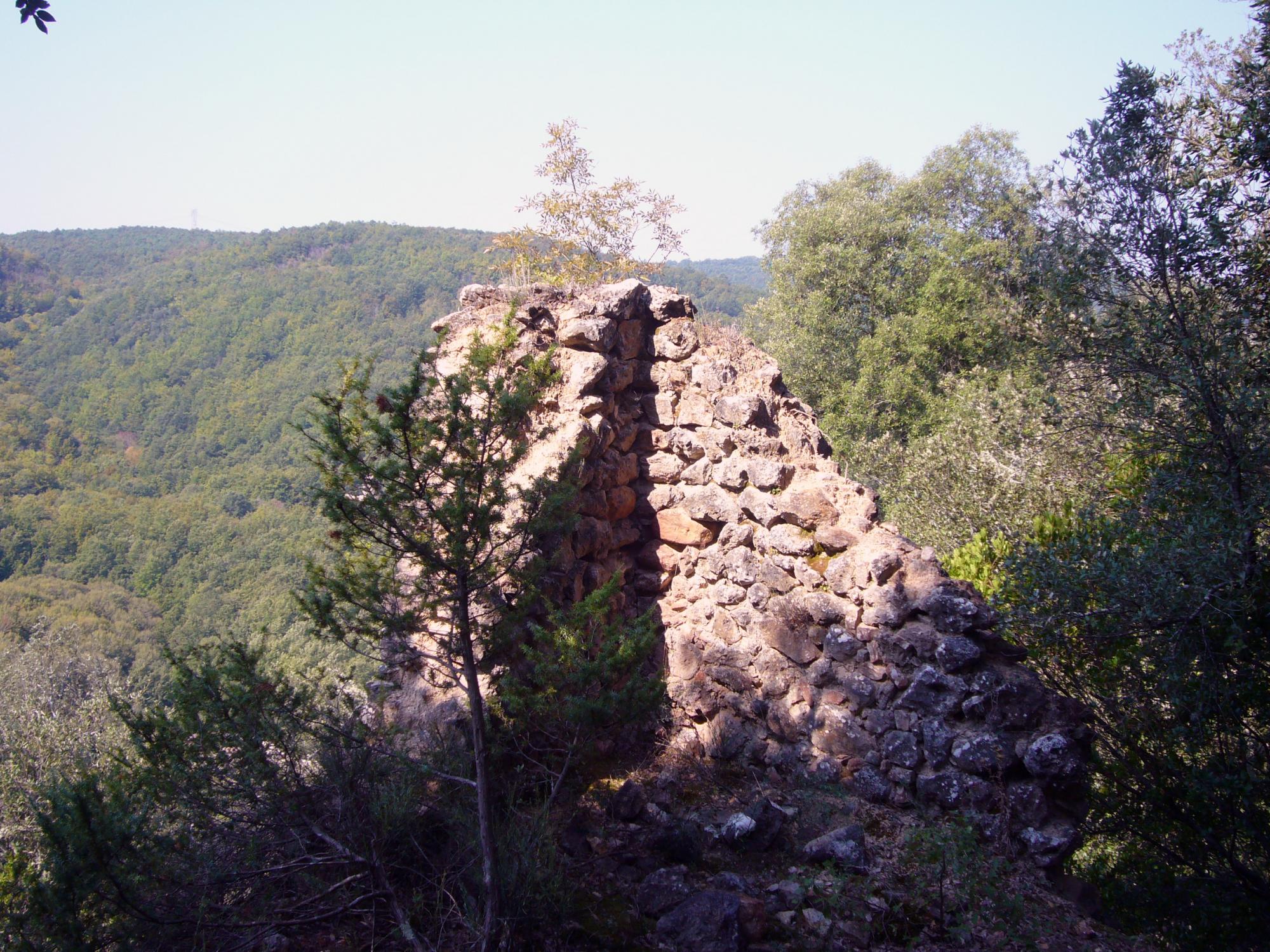













How to reach
The Castle is nestled in the Val di Merse's woods, on the borders of the Castello di Spannocchia Estate. From Florence you can drive on the motorway Firenze-Siena, exit at Colle Val d'Elsa Sud and follow the directions to Grosseto along the SS541 "Traversa Maremmana". At the Montarrenti Crossroad (Colonna Leopoldina) turn left on the SP73bis toward Rosia, after about one kilometer on the right you will find the entrance to the 'Tenuta di Spannocchia' and from here follow a dirt-road. About 1 km passed the Spannocchia Castle turn left (there is an indication said only 'Castiglion', you will find this indication on every successive junction) and leave here the car. From Spannocchia, Castiglion Balzetti is 4,5 kilometers far.
History
The ruins of this castle are commonly known as "Castiglion che Dio sol sa" - literally: "the Castle that only God knows" - a clear reference to its remote location: in the wild, isolated, away from roads and other populated places. It can be identified with the ancient "Castellione Bencetti" first mentioned in the Sienese Statutes of 1262. The name probably derives from the Sienese aristocratic family that rules this area.
There are few historical references to this fortification. In the late 13th century, it was under Sienese jurisdiction and received a sentence for failing to send infantrymen to serve the Commune. Another inventory dating from 1271 shows Siena did not send Conestable to the castle, which implies that some of the political rights held by local lords were still respected. These could have been the Saracini, a powerful political faction, who owned until 1318 the fortification, a large part of territory, and a mill located in the castle's area. These written sources and the typology of the still intact original masonry indicate the late construction date of the castle, related to the other fortifications of the territory, perhaps even in the course of the 13th century.
Castiglion Balzetti impressive remains are still visible on site; many of them were recently partially restored. The most ancient part and core of the castle is a big square-shaped stone Keep, with beautiful Romanesque arched windows and a still intact stone staircase to access the upper floor from the inner ward. Beside the main access to the ground floor, there are still two identifiable loopholes.
Against the eastern side of the keep there is a newer and lower building, once the Church of the Castle, and, detached, another one, probably used as a stable. Between these buildings is a poster, which is today the only access to the castle. A little square tower closes the south-west angle with a water pit, and inside there is an oven. All these buildings are connected by a walled curtain that encircles the whole inner ward. On the southern side of this curtain there is the Main Gate (today closed by an iron gate) with a beautiful Roman arch and remnants of the machicolations. All the buildings suffered many changes when the castle was converted to residential-agricultural use.
In addiction to the central nucleus, you can still admire the remains of a second circuit wall. On the east side high powerful walls delimit a flat rectangular area, the outer ward.